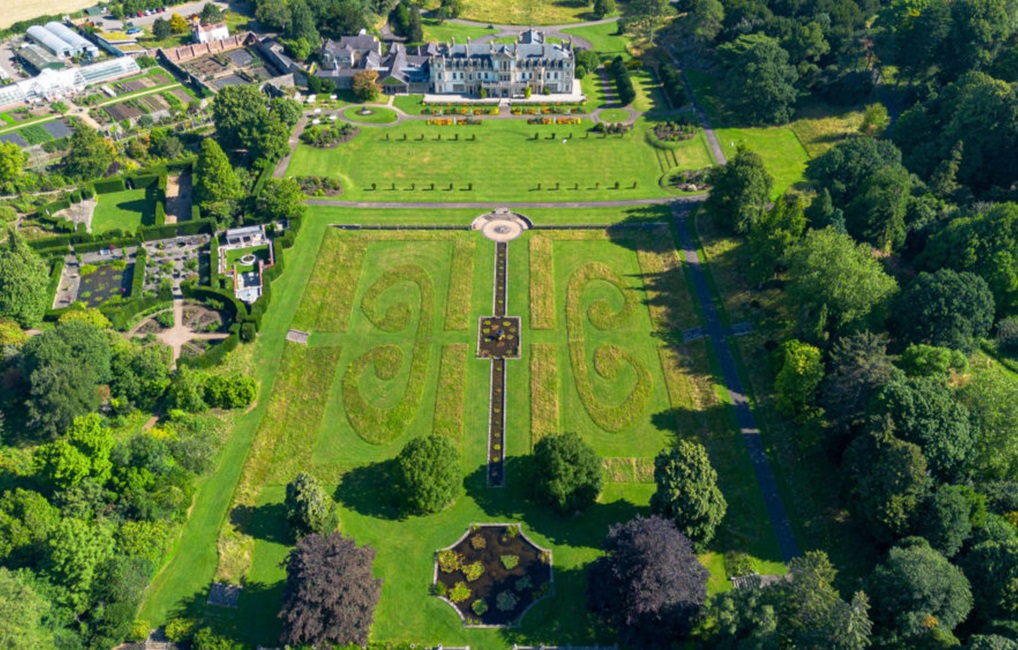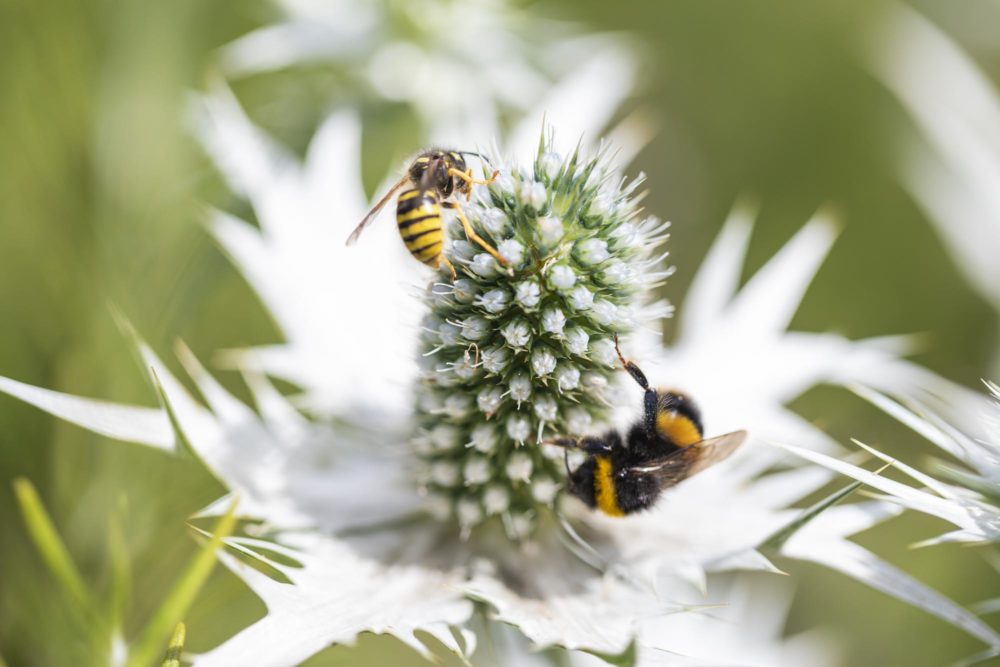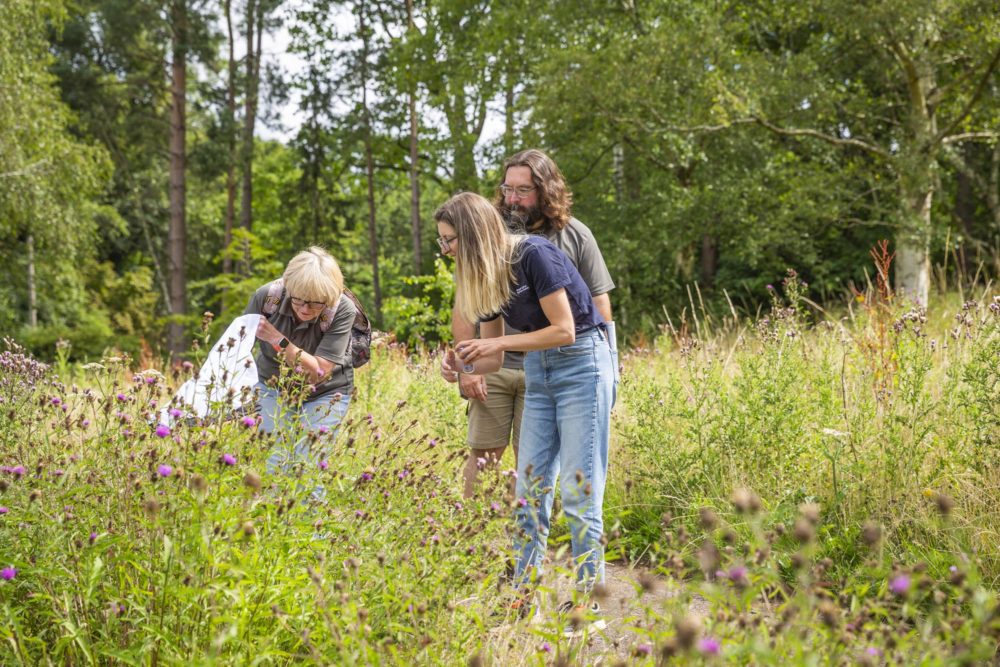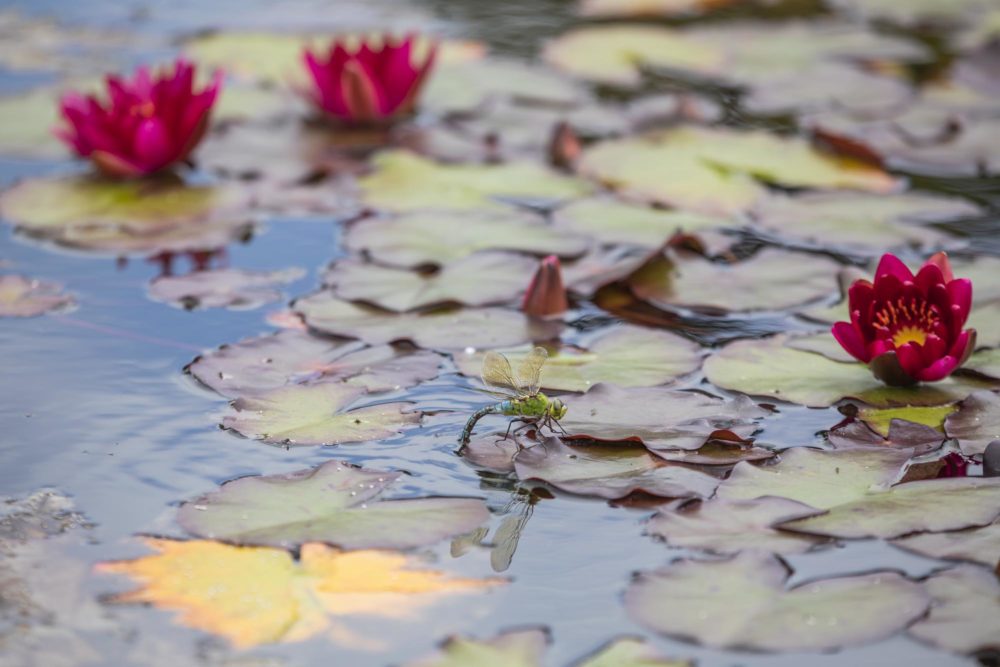Modern restoration of listed garden has biodiversity at its heart

A listed garden on the outskirts of Cardiff is helping to highlight how horticulture and biodiversity can co-exist, after a survey found 66 species of conservation importance at the National Trust site.
Dyffryn Gardens is a peaceful oasis located near Cardiff with a mix of sweeping formal lawns, kitchen garden, arboretum and Edwardian garden ‘rooms’.
But its 90 acres are not only home to plants from around the world, vegetables and wisteria, they are also home to an ambitious new approach to garden restoration.
Innovation
As the National Trust restores the Grade-I garden, it is not aiming to achieve an exact historic recreation, but to look – inspired by the original owner’s spirit of experimentation – for innovative ways to garden with biodiversity firmly in mind.
The ‘mini meadows’ on the Great Lawn at Dyffryn have proved to be a spectacular site for visitors for the last few years, whereby grass is allowed to grow tall (in the form of meadow ‘spirals’) and has encouraged more insects such as dragonflies, as well as swifts and hobbies.
Waxcaps are improving year on year and the estate now has enough waxcaps to be considered a site of special significance.

Head Gardener, Chris Flynn says: “We think Dyffryn is a hot spot for biodiversity. But we want to prove this over the next three years and use that understanding to do a modern restoration in a sustainable way.”
Chris has recently received the first results of an in-depth, three-year biodiversity study to back anecdotal evidence with scientific rigour.
He continued: “Dyffryn had always been managed with good intentions, but we asked ourselves, how much better can we make it? We hope to answer: what lives here, how do they interact and what is the value of the garden to them? How do pollinators use our cultivated plants?
“We can then balance biodiversity, history and visitor enjoyment, and ensure we allow space for nature recovery. We can show that gardens can be spectacular and be rich in biodiversity.”
Rebalance
The changes to management approaches and planting have already started to pay dividends, with initial survey results finding 66 species of conservation importance.
This includes a healthy newt population (palmate and great crested), nesting greenfinches, notable invertebrate species, whiskered bats, good dragonfly diversity and many species of bee, including brown-banded carder bees and the variable nomad bee (new to Wales).

In addition, it was found that within two months of mowing the parkland on rotation (as opposed to being closely mown as had been done for 80 years), pyramidal orchids appeared.
This approach has already resulted in an increase in yellow meadow ants and green woodpeckers; queen bumblebees nesting in the tussocky grass; and more mice, voles and, in turn, barn owls.
These methods along with more diverse planting in the shrubberies extend the season for early foraging pollinators.

It’s not just the land benefiting from these changes, but the Reflecting Pool, once emptied and scrubbed annually, has been allowed to settle and rebalance naturally.
Now it is home to pea mussels, great crested newts, water stick insects and more dragonflies, in turn attracting kingfishers and long-eared bats.
Find out more about Dyffryn Gardens here.
Support our Nation today
For the price of a cup of coffee a month you can help us create an independent, not-for-profit, national news service for the people of Wales, by the people of Wales.







Well and good but this is imposing modern political ideas on a historic planned garden which is not what the National Trust used to be about. It should be renamed omitting the word garden.
Gardens were never preserved in aspic, every head gardner would put there own stamp on it and owners especially in Victorian times introduced plants from around the world. I am sure Dyffryn will remain a fantastic place to visit as it recovers from a period of under investment and care when managed by a local authority.
Dyfryn is excellent, recent years I have seen great transformations. Love the way this is evolving. Even walked in the pond, sans water way back when and nice to see it full and managed.
They even tout using peat free compost.